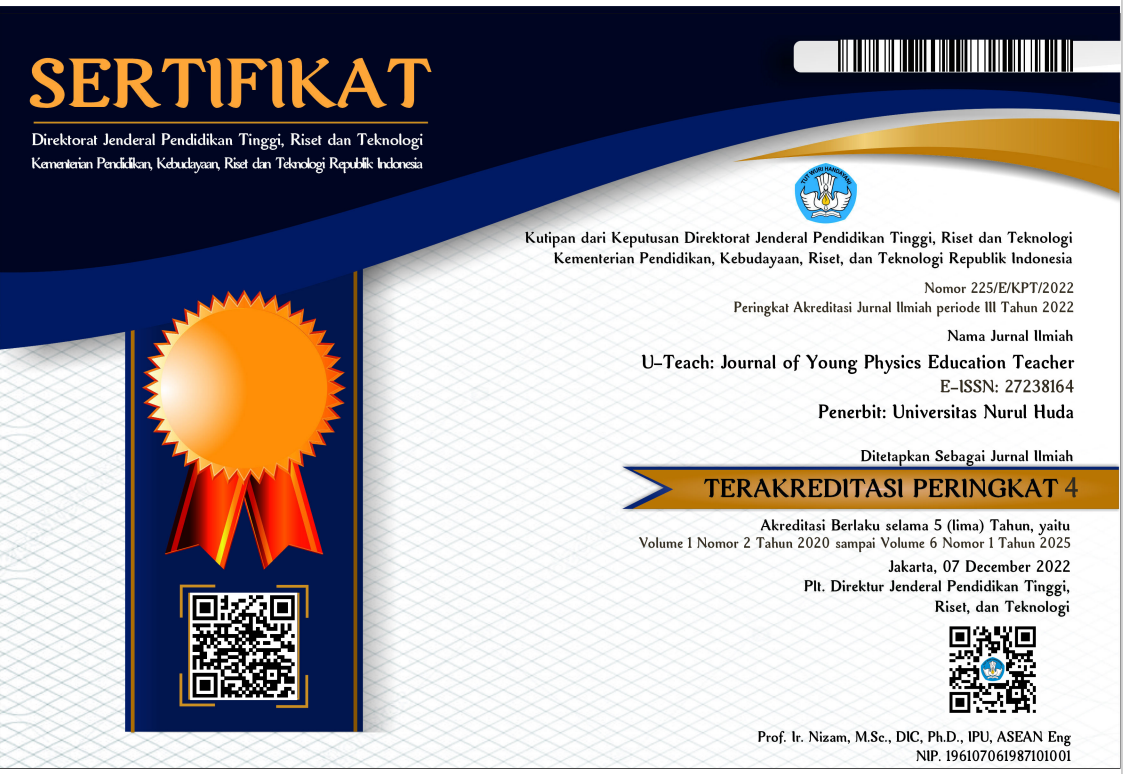Laboratorium Virtual (PhET Simulation): Peningkatan Kemampuan Analisis Siswa Pada Materi Gelombang Mekanik
DOI:
https://doi.org/10.30599/uteach.v2i2.44Keywords:
Kemampuan Analisis, PhET Simulation, Gelombang MekanikAbstract
Physic Education and Technology (PhET) is a virtual laboratory-based learning media that was created to facilitate practical activities. This study aims to improve students' analytical skills on the concept of mechanical waves. This type of research is quantitative research. This research was conducted at SMP NU Bumirahayu involving 23 students taken by random sampling. This research was conducted using a Quasy Experiment method in the form of Pre-experimental Design using one class. Data was collected by giving pretest and post-test. The type of question used is a description test. The data analysis technique used the N-gain test. The results of the study on the calculation of N-gain showed that the average pretest score was 36.61 while the average post-test score was 90.17. Based on the results of the N-gain calculation, it can be seen that learning using virtual laboratory media (PhET Simulation) can improve students' analytical skills. For researchers who will apply learning using virtual laboratory media, they should be able to display simulations with the latest innovations so that the goals are achieved and the final learning outcomes are even better.
Downloads
Downloads
Published
How to Cite
Issue
Section
License
Copyright (c) 2021 Adi Resesi Anto, Thoha Firdaus, Widayanti Widayanti, Arini Rosa Sinensis

This work is licensed under a Creative Commons Attribution-ShareAlike 4.0 International License.






